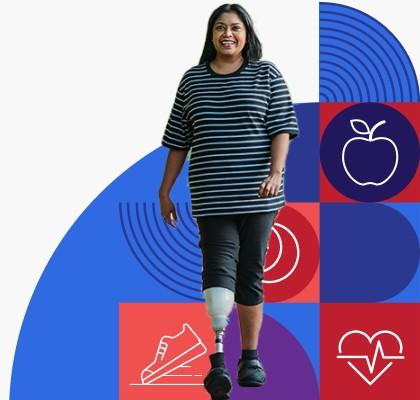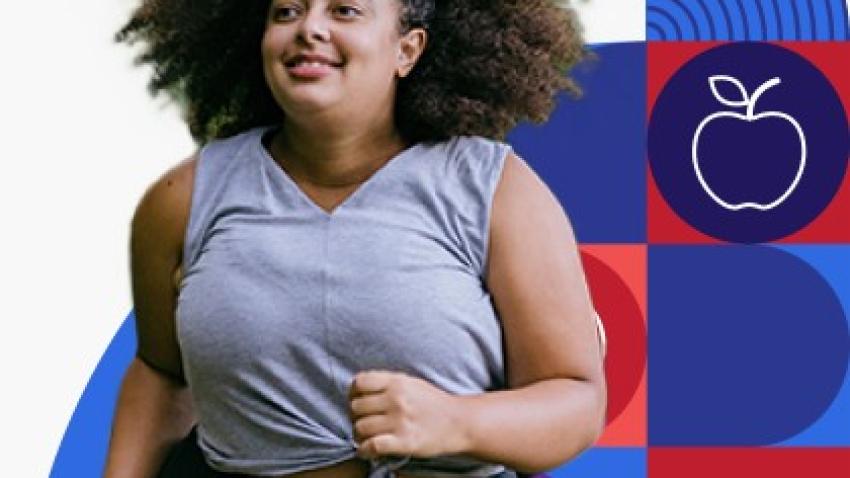Health Conditions
Stay Active with a Disability: Quick Tips

Regular physical activity is good for everyone's health, including people with disabilities. Getting active can help you:
- Strengthen your heart
- Build strong muscles
- Lower stress
- Boost your mood
- Improve symptoms of anxiety or depression
Include moderate-intensity aerobic activity in your weekly routine.
- Choose activities that make your heart beat faster — like walking fast, doing chair boxing, swimming, or raking leaves.
- If you can, aim for 150 minutes a week of moderate-intensity aerobic activity.
- Start slowly and do what you can — even 5 minutes of physical activity has real health benefits, and you can build up to more over time.
Do muscle-strengthening activities at least 2 days a week.
- These include activities like push-ups or lifting weights. Pick activities that work for you.
- You may need someone to help you do certain muscle-strengthening activities — talk with your doctor or a trained physical activity specialist if you think you need help.
- If you can, try working on the muscles you use less often.
Find support and stick with it.
- Try different activities until you find something you enjoy — that way, you’ll be more likely to stick with it!
- For some people, getting active with friends helps them stay motivated, while others prefer to get active alone. It’s all about what works best for you.
- If having a routine is helpful for you, try planning activities ahead of time. For example, you could take a weekly fitness class or go to the park at the same time every day.
- Consider reaching out to a trained physical activity specialist, like a physical therapist or certified exercise professional. They can help you plan a routine that fits your needs and helps you feel your best — physically and mentally.
- If you don’t meet your physical activity goal, don’t give up — you can try again tomorrow.
- Be active according to your abilities — keep in mind, any amount of physical activity is better than none!
Talk with your doctor if you have questions.
Consider talking with your doctor about the types and amounts of physical activity that are right for you. You can ask questions like:
- What activities would you recommend for me?
- Can you refer me to a trained physical activity specialist — like a physical therapist or personal trainer?
- Can you recommend a gym or recreation center near me that has experience working with people with similar disabilities?
If you’re taking any medicine, be sure to ask if it can affect how your body responds to physical activity.
Content last updated February 14, 2024
Reviewer Information
This information on physical activity was adapted from materials from the Physical Activity Guidelines for Americans.
Reviewed by:
U.S. Department of Health and Human Services’ Physical Activity Guidelines Review Team


